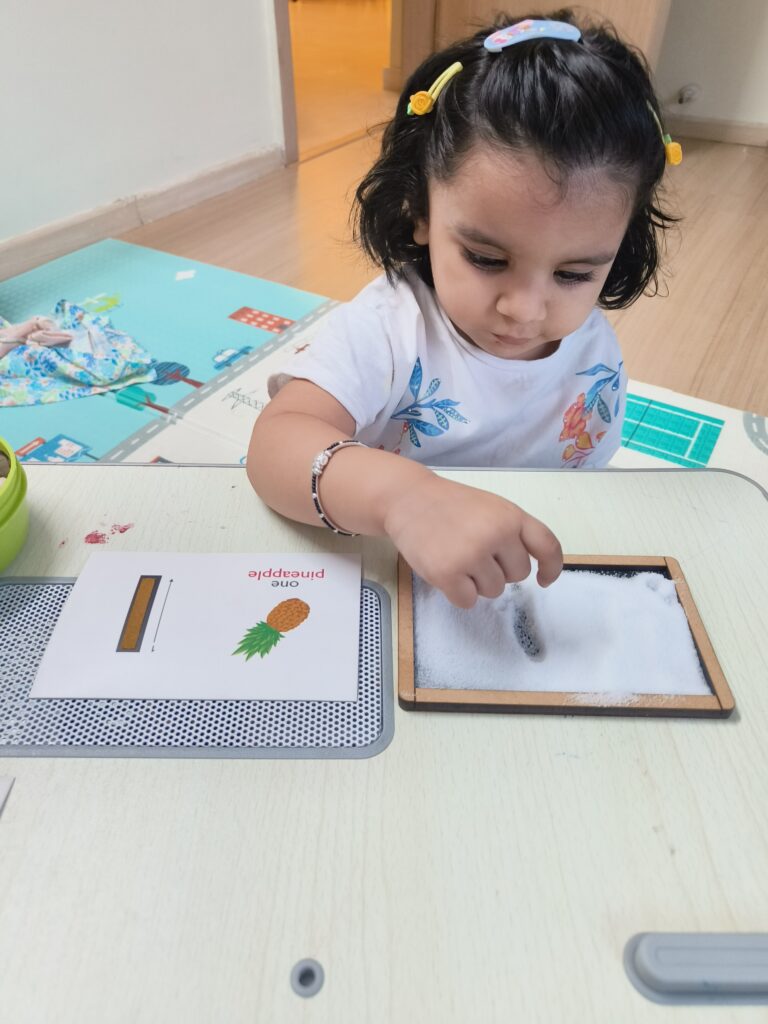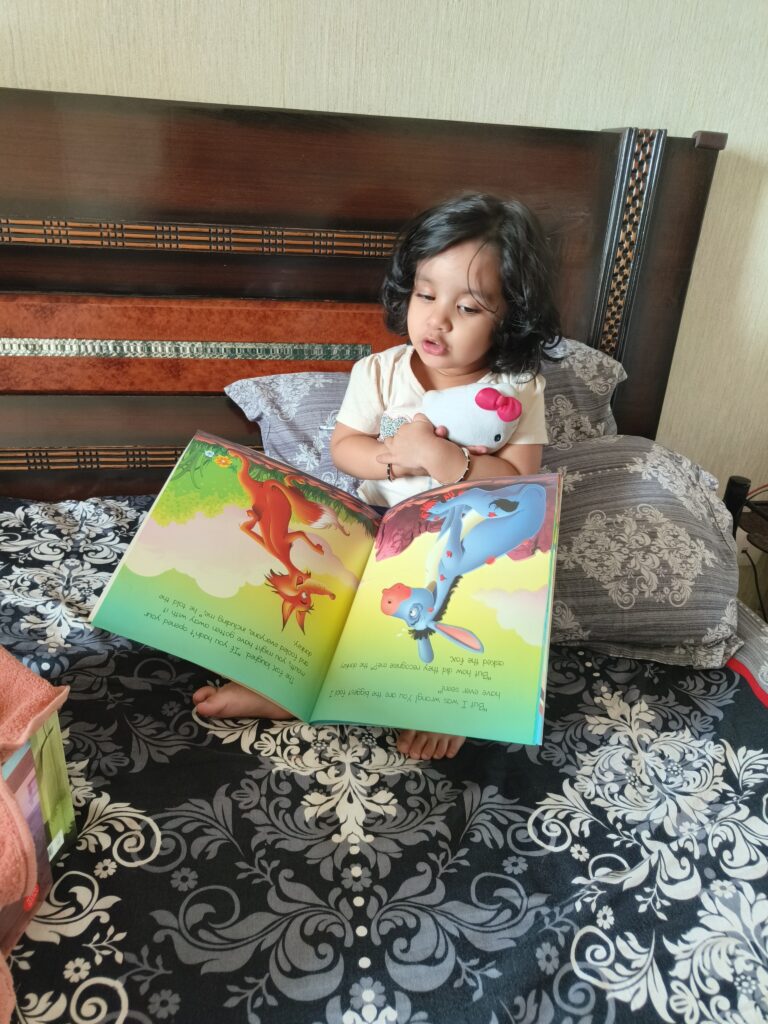Montessori education is renowned for its effective use of meticulously designed materials that support children’s learning and development. These Montessori materials play a pivotal role in Montessori education, offering a hands-on and interactive approach to education. Specifically, they contribute to preparing children’s hands for handwriting, a crucial skill in their educational journey. As a result, these materials indirectly prepare children from toddler to primary school.
In our previous blog article, we have explained why writing is introduced before reading in a Montessori classroom, its benefits and its process. In this article, we will delve into the significance of Montessori materials in developing handwriting skills and fostering a love for learning.
How do Montessori Materials Prepare Hands for Handwriting?
In Montessori programs, children are introduced to writing before they begin reading, as the two skills are interconnected. The Montessori approach to writing and reading is carefully structured, allowing children to develop essential skills gradually. Here are the steps involved in the Montessori Primary classroom that lead to the onset of writing and reading, highlighting the materials and activities used:
Building Fine Motor Skills: The Foundation for Handwriting: The Thumb-Index Finger Grip
In Montessori programs, teaching writing begins by focusing on the development of fine motor skills. The curriculum is thoughtfully designed to help children strengthen their pincer grip, an essential prerequisite for holding a pencil. Activities such as lifting solid wooden cylinders from an oblong wooden case allow children to practice their pincer grip and enhance their finger dexterity.
Preparation of the Hand Using Practical Life Activities
A well-known researcher, Dr. Lillard mentioned in her book, “An Answer to the Crisis in Education,” that Montessori educators introduce practical life activities, such as dressing frames, as early as two years old to foster the fine motor skills and hand-eye coordination necessary for writing.
Montessori educators know that fine motor skills must be developed before a child can write. Practical life activities in a Montessori classroom, such as pouring, spooning, using tongs, and buttoning, help develop fine motor skills and hand coordination. These activities require children to use their hands and fingers in precise and controlled movements, which indirectly prepares them for the dexterity required in writing.
Refining Hand Movements through Sensorial Exploration
Montessori sensorial materials, such as the Cylinder Blocks and Pink Tower, play a vital role in refining a child’s sense of touch and visual discrimination. By manipulating these materials, children develop hand control, finger strength, and the ability to different sizes and shapes, which are fundamental for writing. The sensory experience provided by these materials enhances children’s understanding of spatial relationships and promotes the development of fine motor skills required for precise handwriting.
Developing a Steady Hand: Metal Insets
Metal Insets are geometric shapes, such as circles, squares, and triangles, made of metal and mounted on wooden frames. Children trace these shapes using a pencil, helping them refine their hand movements, develop a steady hand, and control the pressure applied to the pencil. This activity promotes hand-eye coordination, and spatial awareness, and prepares the hand for more accurate and controlled writing skills.
Mastering Wrist Action: Tracing Shapes and Insets
Children further refine their writing skills by tracing shapes from the Geometry Cabinet, which helps develop the necessary wrist action associated with writing. They learn the names of shapes as they trace along their edges, honing their fine motor control. Tracing leaf shapes in the Botany cabinet using a delicate orange stick also improves their ability to maneuver into corners.
Connecting Sound, Muscle Memory and Letter Formation: Sandpaper Letters
Sandpaper Letters are tactile materials consisting of individual letters of the alphabet made of sandpaper and mounted on wooden boards. Children trace the letters with their fingers, feeling the texture and shape of each letter. This multisensory experience allows them to develop muscle memory, fine motor control, and a sense of letter formation. They associate each letter with its phonetic sound, preparing them for reading. Eventually, they transfer the hand motions from the Sandpaper Letters to writing with a pencil, forming words in cursive.
Reinforcing Letter Formation: Sand Trays or Salt Trays

Sand or salt or rice trays are shallow trays filled with fine-grained materials. Children use their fingers or a stylus to practice writing letters on the tray. The tactile experience of writing in sand or salt reinforces letter formation and allows children to correct mistakes easily by smoothing the surface and trying again. This activity provides a sensory-rich environment for practicing handwriting skills.
Progression to Writing
Once children have developed their fine motor skills, letter sounds, and basic phonetic skills, they are gradually introduced to writing with a pencil. As their skills develop, they progress to writing words and sentences. Montessori teachers provide guidance and correction as needed, fostering the child’s autonomy and self-confidence.
Handwriting Practice
Montessori classrooms provide a variety of materials for handwriting practice, such as sand trays, chalkboards, and lined paper. These materials allow children to experiment with different writing tools and surfaces, promoting a multi-sensory experience. Tracing letters, copying words or sentences, and eventually composing their own written work is part of the daily routine.
There are more such Montessori materials and their variations that help in preparing hands for writing in the future, but this overview provides a glimpse into the intentionally structured curriculum that a child encounters in a Montessori classroom. Thus, leading to remarkable results. Most children who enroll as older 2- or young 3-year-olds can write in cursive by the age of four, with reading skills naturally emerging during the months after writing instruction begins.
Research Supporting the Montessori Approach:
Numerous studies have demonstrated the long-term advantages of early reading. Strong reading ability in first grade predicts vocabulary, reading comprehension, and general knowledge in eleventh grade. Montessori’s phonemic approach to early reading has shown superiority over whole-language approaches, with preschoolers trained in phonemic awareness exhibiting higher reading comprehension scores in subsequent years. Recent research also supports Montessori’s haptic approach, where children trace letters while making their sounds, as an effective method for learning to read.
Promoting a Love for Reading:

Research indicates that the more children read, the more knowledge they acquire. Early enjoyment of reading is crucial for long-term reading success. The Montessori approach prioritizes making the reading process enjoyable, ensuring that children develop a love for reading by avoiding laborious and unpleasant experiences.
Conclusion
In a Montessori education, this systematic progression from tracing to writing in cursive empowers children to develop a flowing motion that makes writing more natural and enjoyable. The Montessori approach recognizes that handwriting is not merely a functional skill, but an avenue for self-expression and communication.
Therefore, we can say that the power of Montessori materials in developing handwriting skills is evident in the intentional design, hands-on engagement, and holistic approach of Montessori education. By embracing these materials and implementing the Montessori philosophy, children not only learn to write but also develop a lifelong love for learning. The impact of these foundational skills reaches far beyond the classroom, empowering children to become confident and effective communicators in all aspects of their lives.
References
- Lillard, A. S. (2005). Montessori: The Science behind the Genius. Oxford University Press.
- Montessori, M. (1989). The Montessori Method: Scientific Pedagogy as Applied to Child Education in “The Children’s Houses.” Montessori-Pierson Publishing Company.
Citations:
- Lillard (2005) emphasizes the importance of Montessori materials in developing fine motor skills and hand-eye coordination for handwriting.
- Montessori (1989) discusses the systematic progression in Montessori education, from tracing shapes to cursive writing, as a way to empower children in developing a flowing motion in their writing.
- The power of Montessori materials in developing handwriting skills is evident in the intentional design, hands-on engagement, and holistic approach of the Montessori education (Montessori, 1989).
- By embracing Montessori materials and philosophy, children not only learn to write but also develop a lifelong love for learning (Lillard, 2005).


